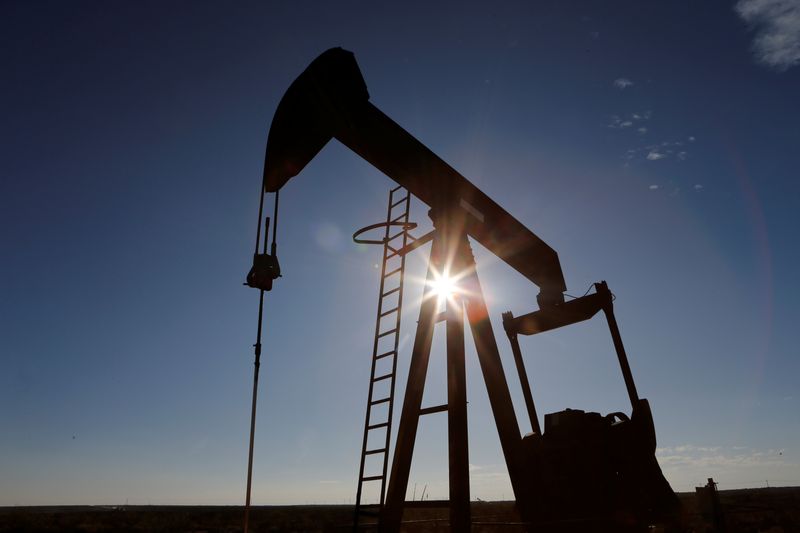Commodities
Oil prices jump on disruption fears after latest Red Sea attack


© Reuters. FILE PHOTO: The sun is seen behind a crude oil pump jack in the Permian Basin in Loving County, Texas, U.S., November 22, 2019. Picture taken November 22, 2019. REUTERS/Angus Mordant/File Photo
By Noah Browning
LONDON (Reuters) -Oil prices rose more than 2% in the first session of the New Year, boosted by potential disruption to Middle East supply after the latest attack on a container ship in the Red Sea and by Chinese demand hopes.
rose $1.72, or 2.2%, to $78.76 a barrel by 1115 GMT. U.S. West Texas Intermediate crude was up $1.57, or 2.2%, at $73.22.
A Reuters survey of economists and analysts predicted that Brent crude would average $82.56 a barrel this year, up slightly from the 2023 average of $82.17, with weak global growth expected to cap demand. Geopolitical tensions, however, could provide price support.
U.S. helicopters on Sunday repelled an attack by Iran-backed Houthi forces on a Maersk container vessel in the Red Sea, sinking three Houthi vessels and killing 10 of the militants, fuelling risks of the Israel-Hamas war becoming a wider conflict.
“The oil price may be affected by the escalation … in the Red Sea over the weekend and the peak demand season during China’s spring festival,” said Shanghai-based CMC Markets (LON:) analyst Leon Li, referring to the Lunar New Year holiday in early February.
A wider conflict could close crucial waterways for oil transportation.
At least four tankers carrying diesel and jet fuel from the Middle East and India to Europe are sailing around Africa to avoid the Red Sea, ship tracking data shows.
In China, investor expectations of fresh economic stimulus measures rose after manufacturing activity shrank for a third month in December, government data showed on Sunday.
Any such stimulus for economic growth could boost oil demand and support crude prices.
Commodities
Oil prices rise; U.S. crude inventories plunge, Russia-Ukraine truce eyed
Commodities
India’s Reliance to stop buying Venezuelan oil over US tariffs, sources say
Commodities
Oil prices climb on Venezuela supply worries

 Forex3 years ago
Forex3 years agoForex Today: the dollar is gaining strength amid gloomy sentiment at the start of the Fed’s week

 Forex3 years ago
Forex3 years agoUnbiased review of Pocket Option broker

 Forex3 years ago
Forex3 years agoDollar to pound sterling exchange rate today: Pound plummeted to its lowest since 1985

 Forex3 years ago
Forex3 years agoHow is the Australian dollar doing today?

 Cryptocurrency3 years ago
Cryptocurrency3 years agoWhat happened in the crypto market – current events today

 World3 years ago
World3 years agoWhy are modern video games an art form?

 Commodities3 years ago
Commodities3 years agoCopper continues to fall in price on expectations of lower demand in China

 Economy3 years ago
Economy3 years agoCrude oil tankers double in price due to EU anti-Russian sanctions



























